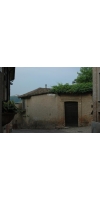Wine from Castello di Neive

Castello di Neive and the surrounding 150 acre estate are owned by the Stupino family, siblings Anna, Giulio, Italo, and Piera. The Castello di Neive winery began when Giacomo Stupino, the family patriarch, capitalized on his experience as a surveyor and his knowledge of the area to purchase favorable vineyards and land whenever possible. In the small cellars of their family home, the Stupino’s began their first wine production (including Messoirano, Montebertotto, Basarin, Valtorta, and i Cortini) and, over time, their acquired vineyards grew with the family’s production and ambitions. In 1964 the family purchased the castle with its spacious cellars, along with more land and farmsteads in Santo Stefano and Marcorino. This marked a turning point when the Stupino’s were able to renovate the castle cellars and reorganize their vineyards to produce wine according to modern methods. When Giacomo died in 1970, Giulio and Italo oversaw the transition from tenant farming to direct management of the land, initiating production and export of Castello di Neive wines abroad.
Location of Vineyard
The cellars of Castello di Neive are extremely large, clearly demonstrating the designers’ optimism that the winery’s quality would be easily recognized. Castello di Neive comprises a 150 acre (60 hectares) estate, all in the Neive town council, in the Langhe area of the Piedmont region. Sixty-two acres (25 hectares) of the property are devoted to grape growing and all the production (approximately 12,000 cases a year) is obtained from Castello di Neive’s own vines in the following vineyards: Basarin, Cortini, Gallina, Marcorino, Messoirano-Montebertotto, Santo Stefano and Valtorta.
Winemaking Philosophy
Tradition, research, and creativity make up the philosophy of the Castello di Neive winery. Recently released photographs from the winery’s library show that, as early as 1904, Pinot Nero was being bottled at the castle, and that by 1925 Nebbiolo was recognized as a fine wine grape with varietal labeling. Now, roughly one century later, the Stupino family continues tradition of cultivating and vinifying these noble varieties as well as the often overlooked Barbera and Dolcetto and the local favorite, Grignolino. The Stupinos’ winemaking philosophy is to respect a centuries-old heritage of winemaking while embracing new technologies and research activities—both in the vineyard and in the cellars.
No products found
- back
Selected Options
Wineries
Categories
Pricing
Countries
Regions
Grape Types
Wineries
Organic/Free Shipping
Bastgen Blauschiefer Riesling is 100 percent Riesling.
Bright, clean, fresh and zesty. Grapefruit like flavors. Fruity aromas and a nice minerality, typical of the Riesling grape grown on blue slate soil. Round, rich and a very long finish.
They meticulously tend 4.5 ha (11.11 acres) of which 80% is Riesling. The soil is made of slate. Their vineyards are located in Kesten and Brauneberg, on a steep terrace, and planted to 50-year old vines. Fortunately for Bastgen, they own part of the famous Brauneberger Juffer Sonnenuhr. The vines produce very small, ripe berries that are very tasty.
Review:
"Very enticing nose of ripe pear with some white peach and floral aromas! All the elegance and delicacy we expect from high-quality Mosel riesling, but this light-bodied and dry beauty is only an entry-level wine! Long, refreshing and delicate finish. This will be a bargain in all the markets it reaches. From organically grown grapes. Drink now. Screw cap. "
- James Sucking (November 2023), 92 pts
Long Shadows Poets Leap Riesling is made from 100 percent Riesling.
Tasting Notes: The Poet's Leap Riesling offers aromas of white peach, jasmine, Thai basil and nutmeg. Flavors of ripe melon, apricot and an appealing minerality continue across the palate. An underlying hint of honey sweetness is balanced by a streak of bright acidity that provides a long, clean finish.




